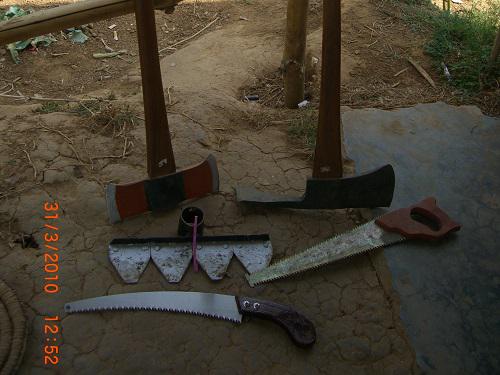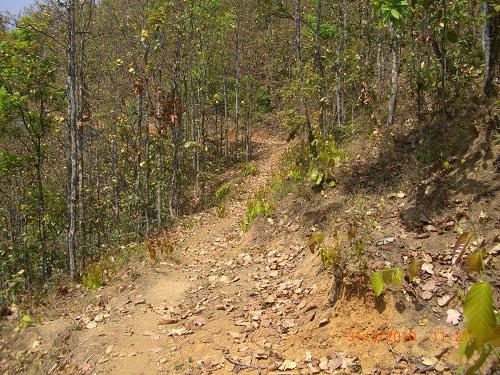Krishna Prasad Acharya
Other projects
The project intended to strengthen and develop linkage and support with different agencies such at community level networking organization, civil society organizations and local government units for development of capability of community forest user groups and concerned agencies to cope with forest fire disaster for nature conservation.

Fire fighting equipment.
Community Forestry is the biggest social mobilization process in Nepal involving more than one third of the total households. The sustainability of forest ecosystem services is determined by several factors including the forest fire management. Forest fires damages all kinds of services delivered by the forest ecosystem, although no specific data are available from Nepal. Community forests located in the Middle Hills are severely fragmented and surrounded by villages. Although, forest users are able to protect their respective forests from cutting and grazing, forest fires occur due to various reasons.

Fireline in Bhadkhore Community Forest.
The forest users are fighting to control forest fires without systematic management plan, proper tools and technical support. In fact, forest fires fought in an inappropriate manner causing serious threats to human life loosing 43 human lives in a year-2009. Thirteen Nepalese army personnel were killed during fire fighting in community forestry in the hills due to lack of knowledge on forest fire behaviour.
/525ae1448630837b655e0f5ce48a8de7.jpg)
Fire line construction in Bharkhore Community Forest.
Forest development, protection and utilization efforts should go hand in hand for forest fire control measures to be effective. Hence, strengthening of the sustainable forest management at community level is indispensable to materialize in a tangible manner. The CBFiM aims to strengthen and develop linkage and support with different agencies such at community level networking organization, Civil Society Organizations and local government units for nature conservation. The mobilization of community forest user groups fund to nature conservation through fire management at local level will have sustainability implications. It will be disseminated in neighbouring forest user groups and ultimately the approach could be a national agenda for CBFiM in Nepal. The strengthened participatory approaches to environmental protection as part of their operational plan will have higher demonstration effects with easy replication of best practices. CBFiM will have enormous effect through following outputs:
-Multi-stakeholders approach on fire management at community level,
-Increased awareness level and increased fire management capabilities of local communities,
-Sustained project interventions and replication of learning to other part of the country
-Sharing knowledge, expertise and information systems with neighbouring communities,
-Contribution towards CBFiM strategy development at national level.
The CBFiM includes four different components as awareness creation, Sustainable Forest management intervention, institutional innovation and dissemination. The activities will be implemented with participation of local people, existing forest user groups, forest users/networks, government institutions and local political units.